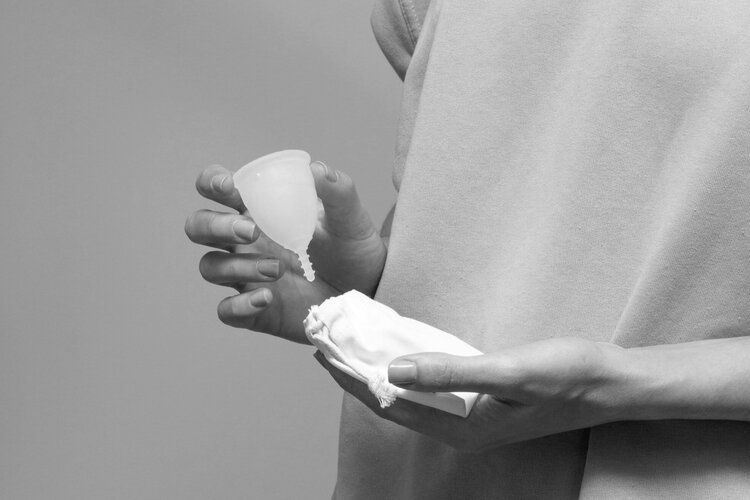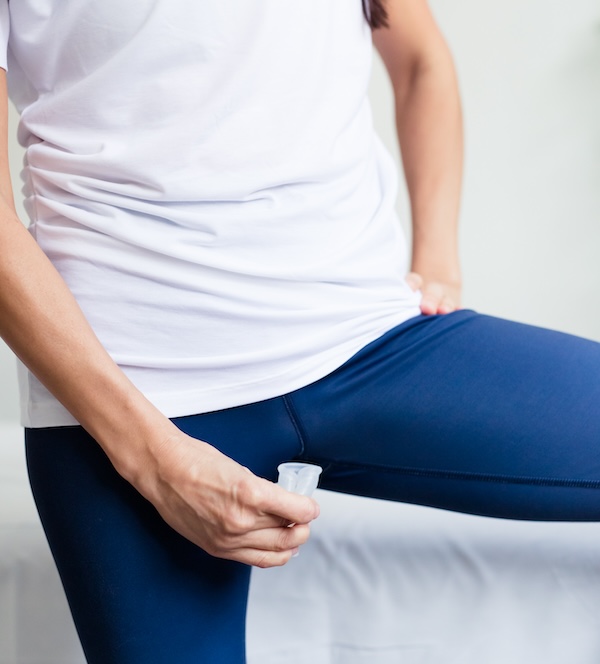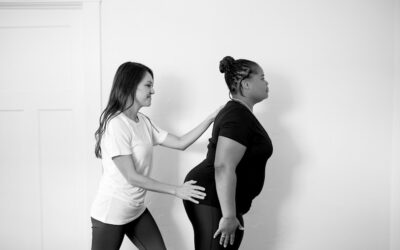For many environmentally conscious folks—or simply financially conscious folks—menstrual cups have become a go-to period product. But some people are hesitant to use them because they’ve heard menstrual cups can cause or worsen pelvic organ prolapse.
Is that true? Are menstrual cups bad for the pelvic floor? Can menstrual cups cause prolapse? Let’s talk about it!
Can Menstrual Cups Cause Prolapse?
Lots of conflicting information exists on the safety of menstrual cups, especially for those with pelvic organ prolapse.
To date, there have been no peer-reviewed studies that show a direct relationship between menstrual cup use and damage to the pelvic floor. So, generally, as long as you use and remove it correctly, a menstrual cup is safe and shouldn’t damage pelvic floor. Even if you have a prolapse!
But proper insertion and removal is key!
Note: If your prolapse is caused by congenital factors–like a connective tissue disorder–a menstrual cup might be too much suction for your pelvic floor. Try a menstrual disc instead!
Pelvic Organ Prolapse
Pelvic organ prolapse happens when one or more of your pelvic organs (bladder, urethra, rectum, uterus, or cervix) drop into the walls of the vagina.
One solution that may provide relief for prolapse is using the right menstrual products. So, is a menstrual cup one of those products?
What’s a Menstrual Cup?
Menstrual cups are small, reusable cups, usually made from medical-grade silicone, that you insert into your vagina to collect menstrual fluids. People use them as an alternative to tampons or other period products. If inserted correctly, the cup forms a suction around your cervix to collect fluid throughout the day.
What Should You Do If You Think You Have Prolapse?
First, it’s important to address the factors that may be contributing to prolapse.
#1 Consult with a pelvic floor physical therapist.
A PT will do an internal assessment of your pelvic floor muscles and tissues. That, along with a thorough history, can help to diagnose the true cause of your pelvic organ prolapse. This will make sure you’re getting the right treatment!
#2 Pee the right way.
For those #1’s, don’t push the pee out. (Seriously.) Just sit and let your flow of urine begin on its own.
For #2’s, I highly recommend a Squatty Potty. This gets your pelvic floor muscles in a more relaxed position for pooping, so you’re less likely to strain.
#3 Breathe.
Improper breathing during activity is one of the top causes of pelvic organ prolapse. Like when you’re lifting weights (or kiddos)! Holding your breath can increase pressure on your abdominal muscles and pelvic floor. Instead, exhale when lifting a heavy object to minimize pressure on your pelvic floor and abdomen.
#4 Relax your pelvic floor.
I know it seems counterintuitive, but incorporating activities that improve pelvic floor relaxation is an essential part of your prolapse treatment plan. If your pelvic floor is too tense you may find yourself training to push pee or poop out which can contribute to prolapse.
#5 Use support devices!
Your pelvic floor PT might recommend some internal or external supportive devices. These are some of my favorites:
Period Products for Pelvic Organ Prolapse
Is prolapse worse when you’re on your period? It can be! During our period, estrogen is at its lowest—which causes all our muscles to get weaker or more easily fatigued.
If you’re looking for the best menstrual cup for uterine prolapse, try this quiz from Put a Cup In It. Personally, I love the Cora Cup. But cups aren’t one-size-fits-all, so do some research and find what might work best for you!
Tampons with prolapse can also be an option during your period or for added support during workouts. They put adequate pressure back on those muscles, moving them into their proper places. I love Lola products because they’re made with high-quality, natural ingredients!
If prolapse is too severe, you might be unable to insert anything into the vagina without pain or discomfort. Instead of menstrual cups or tampons, try period panties. Thinx is my favorite brand.
Considering using a menstrual cup but worried about prolapse symptoms?
Always check in with a Pelvic Floor PT first before starting any exercises.
Additional Sources
Iglesia, C. (2021, December). 5 things I wish all women knew about pelvic organ prolapse. ACOG. Source.





